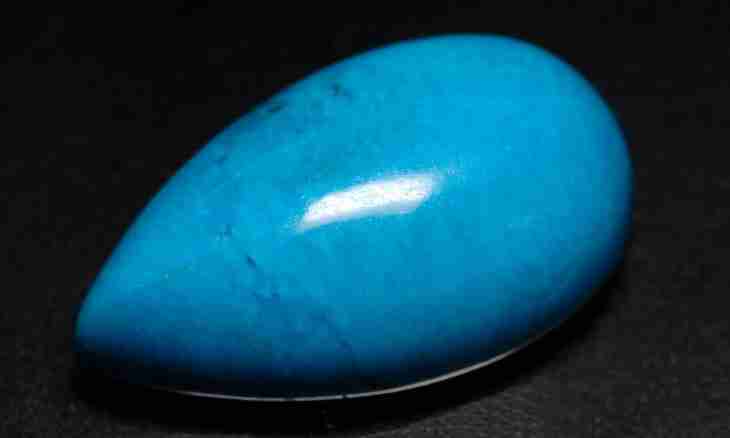Turquoise – mineral of characteristic color which belongs to semiprecious stones and from antiquity is used in a jewelry. It is rather soft, porous mineral therefore it is very sensitive to environmental conditions and at frequent a sock loses color. Natural natural turquoise meets seldom therefore most often on counters of shops it is possible to find products with artificial turquoise and fakes under it.
Instruction
1. The natural, raw turquoise of the superior quality meets seldom, and its cost is big, you will hardly find it in shop, it does not go on broad sale. To strengthen turquoise and to prolong the term of her life, natural stones of average quality subject to processing. On the to gemological tests, appearance and properties such improved or cemented turquoise does not differ from raw and costs practically also.
2. A fake the improved, restored or reconstructed turquoise – the tinted and pressed samples from powder of natural turquoise is also not considered. If, of course, to you they are not tried to be given under the guise of natural high-quality material. Such stones are not considered as a fake as are made of natural natural material, they belong to imitations, as well as received in the artificial way.
3. Turquoise is forged, using the natural minerals or artificial materials imitating its color and texture which are painted over under it. Most often for fakes mineral is used houlit. It is a white or gray stone with the streaks similar to turquoise. After pro-paint it is almost indistinguishable from it. The product size can guard you – turquoise does not meet large pieces. Besides, houlit has porcelain gloss whereas turquoise – wax and also it is softer than a prototype.
4. – odontolit fossilized bones - also sell under the turquoise guise. Such material boils from hydrochloric acid whereas turquoise is just scattered in powder. If to look at such fake under a magnifying glass, primary cellular organic structure of a bone will be visible. If a fake is the painted glass, then under a magnifying glass vials of gas in structure of a sample will be visible. The specific gloss other than an opaque, silky reflection of the polished surface of natural material is characteristic of glass and porcelain fakes.
5. Also fakes "under turquoise" which make of ordinary plastic are popular. They can be determined by the weight since such product will be much easier, than from a natural stone. When heating it begins to exude a pronounced specific smell of plastic.
